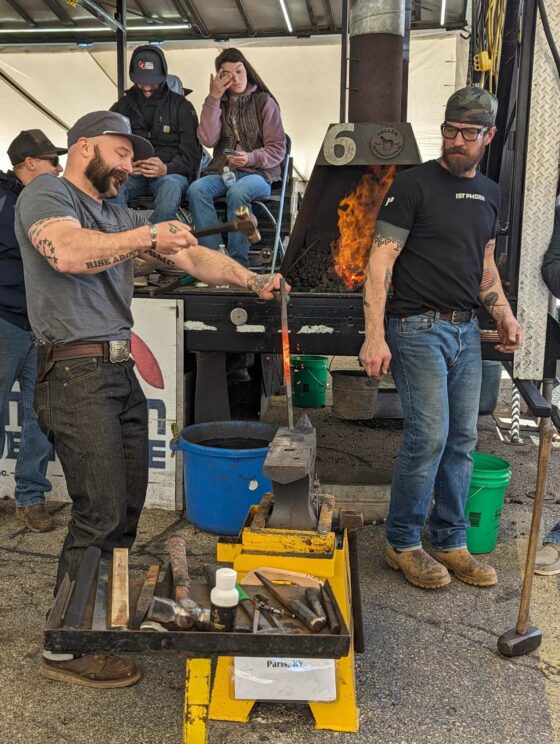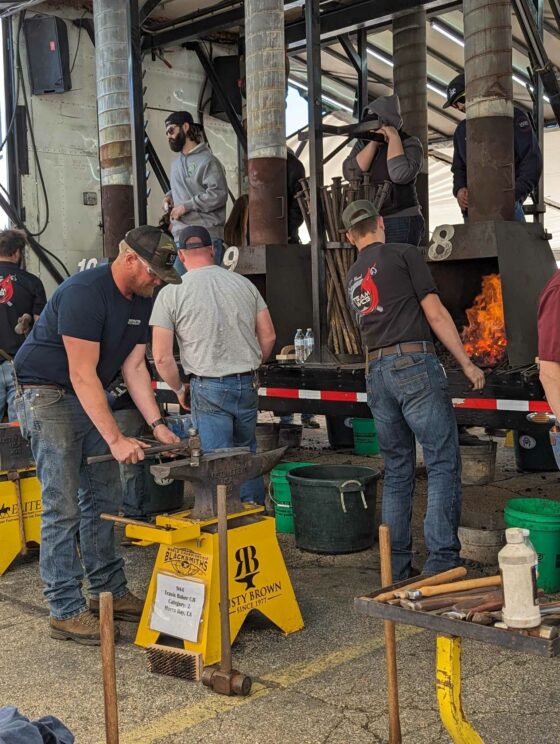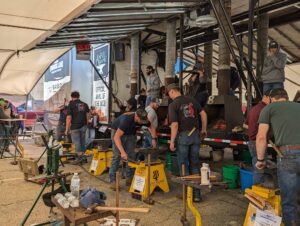Shoes are fashionable, whether they’re for humans or horses. And There was a time when every community had a blacksmith, and their work was focused on utility. Today’s blacksmith’s still focus on utility and function, but there’s also a certain art to what they do. Farriers, the modern-day equivalent of historical blacksmiths, now focus primarily on the craft of horseshoeing. This transition from the all-encompassing role of the blacksmith to the specialized expertise of the farrier marks a significant shift in the industry.
Craig Trnka, a seasoned veteran with 40 years of experience in horse shoeing, sheds light on the evolution of blacksmithing.
“The blacksmith was all-encompassing with agriculture, making plows and various tools essential for farming,” says Trnka. “But with the Industrial Revolution as well as the decline of horses as primary transportation, farriering emerged as a specialized art.”
In Madison, Wisconsin, blacksmiths and farriers from around the region gathered for the World Championship Blacksmiths (WCB) competition. The competition, held at the Midwest Horse Fair, drew participants from diverse backgrounds, showcasing their skills in various categories.
“The WCB competition is three days of intense challenges, testing the participants’ forging abilities and also craftsmanship,” explains Trnka. “From replicating horseshoes to demonstrating skills in forging techniques, contestants vie for the coveted title of the King or Queen of the Midwest Horse Fair.”
The competition is not merely a display of skill. It also serves as a platform for learning and growth within the blacksmithing community.
“We encourage individuals of all skill levels to participate,” says Trnka. “It’s an opportunity for new farriers and blacksmiths to learn from their peers, identify areas for improvement, and refine their craft.”
While the demographic makeup of participants varies, Trnka notes a growing presence of women in the field.
“Women make wonderful farriers, and we’re seeing an increasing number of them joining the profession,” he says. “It’s a refreshing sight to witness young individuals embracing the trade and pursuing entrepreneurship in blacksmithing.”
With each hammer strike on the anvil, they pay homage to a tradition steeped in history yet perpetually evolving.




